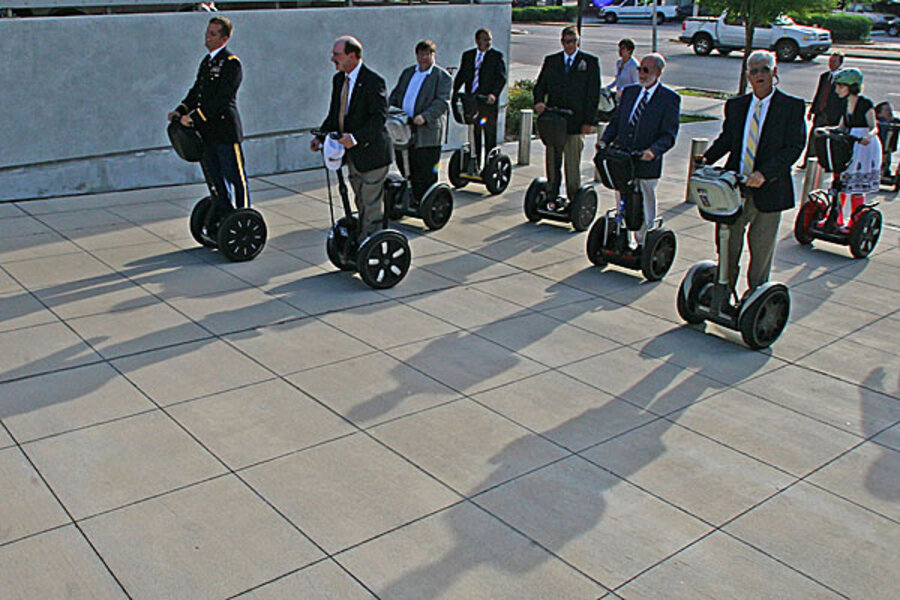Steve Jobs said it would be bigger than the PC. Venture capitalist John Doerr (who backed Netscape and Amazon) said it would be bigger than the Internet. Today? The Segway hasn’t exactly lived up to its early-Millennium hype.
In 2001, a journalist writing a book about the invention of the Segway, leaked the impending release of a new transport machine called “Ginger” to the tech website Insider.com. “Ginger,” which alluded to the light-stepping grace of actress/dancer Ginger Rogers, was the Segway: a balance-sensitive machine that could transport a human at about 13 m.p.h. and last for a day on only 5 cents-worth of electricity. The story – plus glowing pre-release reviews from Mr. Jobs, Mr. Doerr, Amazon boss Jeff Bezos, among other tech giants – spurred huge hype and pre-orders from the National Park Service and the United States Postal Service, and more than $90 million in venture capital funds. Inventor Dean Kamen said it would be to the car what “the car was to the horse and buggy.”
After its release in 2002, however, the Segway quickly sputtered to a halt. Since Segways could go up to 13 m.p.h., they were not allowed on most sidewalks. However, they also went too slow for many roads, leaving customers unsure of where to ride them. Plus, the $4,950 debut price put the machines far out of budget for the average consumer. But the problems didn’t end there. In 2003, Segway recalled all of its devices on the market (only 6,000 at that point) because customers were injured falling off the machine when the battery was low. By 2004, Segway was out of its initial investment money and would have to mortgage its factory.
Since then, Segway has been able to bounce back a bit, gaining contracts with police departments, security companies, and golf courses, and has seen 50 percent sales growth per year since it was first released. For now, however, it appears the most Segways have changed is the state of the tourism industry, with Segway tours in nearly every major city in the United States.






